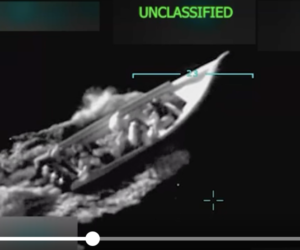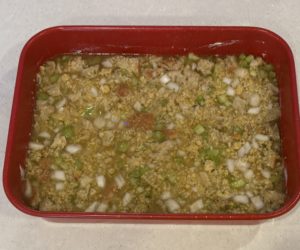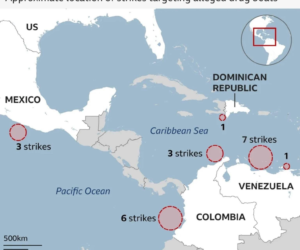As new satellite images — described by Malaysian officials as the most credible lead to Flight MH370’s whereabouts — show 122 pieces of possible debris in the same area where the most recent search has focused, 11 aircraft, five ships, hundreds of personnel and all kinds of sophisticated equipment from the US, China, Japan, South Korea, Australia and New Zealand are posed to scour the area, above and below the waves.
Officials from the Australian Maritime Safety Authority said the search on Thursday had been split into two areas totaling 78,000 square kilometres (30,000 square miles).
Locating and retrieving at least some of the floating objects, ranging in length from one to 23 metres, could prove crucial in the absence of any physical evidence supporting the theory that MH370 ran out of fuel hours after it turned sharply off course and disappeared from air traffic controllers’ screens over the South China Sea en route from Kuala Lumpur to Beijing.
Search teams are hoping the detection equipment will be able to pick up acoustic pings emitted every second from the plane’s black box flight data recorder and cockpit voice recorder.
Each of the two recorders has a beacon, attached to the outside of the black box, which once activated by contact with water makes a sound every second.
But it is a race against time – the beacons have a battery life of just 30 days, after which the pings begin to fade.
Chuck Schofield of Dukane Seacom, a company that has sold the pingers to Malaysia Airlines, told Associated Press the batteries might last an additional five days before dying.
Assuming that the plane crashed on 8 March, as Malaysian officials insist, that means the beacons aboard MH370 will begin to fade around 7 April and could go silent around 12 April.
The U.S. Navy has already moved a “Towed Pinger Locator hydrophone” and a “Bluefin-21 Side-scan sonar” to Perth for transportation to the presumed crash site and is sending a second P-8A Poseidon Patrol aircraft to Perth to aid in the search efforts. Harsh weather conditions, including ceilings as low as 800 feet and potential icing conditions, make the addition of the all-weather P-8 extremely valuable, says the U.S. 7th Fleet Public Affairs. U.S. Navy patrol aircraft have already flown 16 missions, flying more than 150 flight hours and covering 220,000 square nautical miles.
The Towed Pinger Locator (TPL) 25 System used for locating emergency location pingers on downed Navy and commercial aircraft at a maximum depth of 20,000 feet anywhere in the world. (U.S. Navy photo)
Cmdr. Tom Moneymaker, U.S. 7th Fleet oceanographer, says “It’s critical to continue searching for debris so we can reverse-forecast the wind, current and sea state since March 8th to recreate the position where MH370 possibly went into the water. We’ve got to get this initial position right prior to deploying the Towed Pinger Locator since the MH370’s black box has a limited battery life and we can’t afford to lose time searching in the wrong area.”
The Navy describes the new P-8 Poseidon as follows:
A P-8A Poseidon from the “War Eagles” of Patrol Squadron (VP) 16, on display at the Singapore Air Show.(U.S. Navy photo by Mass Communication Specialist 1st Class Jay Pugh)
In terms of mission effectiveness and reliability, the P-8A represents a leap forward for the Navy’s maritime patrol and reconnaissance community. The aircraft has a maximum speed of 490 knots, a ceiling of 41,000 feet, and provides a range of more than 1,200 nautical miles with four hours on station. For a mission such as the MH370 search, the P-8 will typically fly at 5,000 feet at 350 knots, dropping to 1,000 feet to get a visual identification of any radar returns. It may also fly at 1,000 feet for an extended period of the flight, depending on the environment and mission for the flight. It has a search time of approximately eight, nine hours depending on distance to search area, though during this mission the search time on station is greatly reduced due to the distance of the search area from Perth.
The P-8A is the most advanced long range anti-submarine and anti-surface warfare aircraft in the world. A true multi-mission aircraft, it also provides superior maritime intelligence, surveillance and reconnaissance capability. Built on the proven Boeing 737 airframe, the P-8A brings with it enhanced safety and reduced maintenance.
U.S. Navy Lt. Cmdr. Mike Trumbull monitors his workstation on a P-8A Poseidon at sea, March 24, 2014, during a mission to assist in the search for Malaysia Airlines Flight 370. Trumbull is a naval flight officer assigned to Patrol Squadron 16.
Lead photo: A U.S. Navy air crew looks for floating debris while on a P-8A Poseidon at sea, March 24, 2014, during a mission to assist in the search for Malaysia Airlines Flight 370.
All photos and captions: U.S. Navy




















